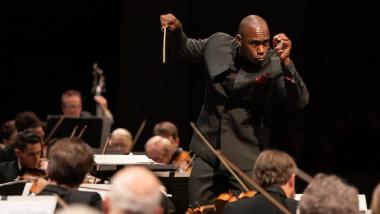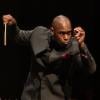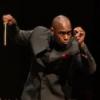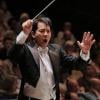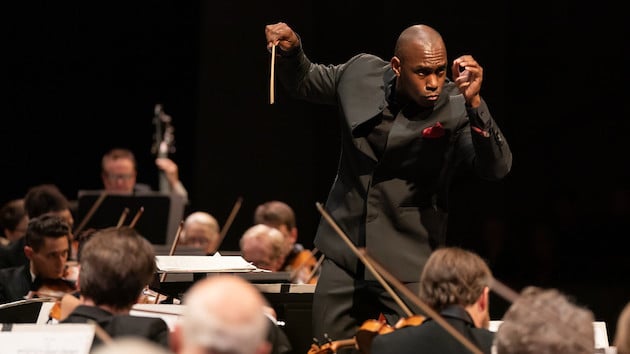
Conducting is not a low-stress career. When the Berkeley Symphony called on Joseph Young to step in, the conductor had just two days to get up to speed on Leonard Bernstein’s second symphony, aptly named The Age of Anxiety, as well as the ominous majesty of the four orchestral interludes from Britten’s Peter Grimes. By all accounts he rose to the task admirably. “I didn’t sleep,” Young says. “I even had a concert with the San Francisco Symphony that weekend as well. It was a great weekend of music making and I enjoyed every second of it, but I didn’t sleep until I got back to Baltimore.”
In the wake of this triumph, Young was offered the music directorship for a three-year post, filling the shoes of Joana Carneiro, who took over for now internationally renowned Kent Nagano. Whether Young feels any such stellar trajectory as Nagano’s in his own future, he is certainly a conductor on the rise, and feels this post to be a great fit.
“What I like about Berkeley is that it’s so optimistic about music and open to new things. You have amazing orchestras here that are not doing the cookie-cutter way of presenting concerts. [Berkeley is] an orchestra that has a history of doing daring and innovative things, and not only the orchestra, but there is a community that is so into it. Messiaen is such a big thing with some of our patrons and donors, and that is remarkable. I haven’t studied much Messiaen, but it makes me want to be a part of that love-fest. This town for me is the perfect place for a first music directorship. I’m in a wide-open, liberal thought-minded, curious place, and I just want to embrace that.”
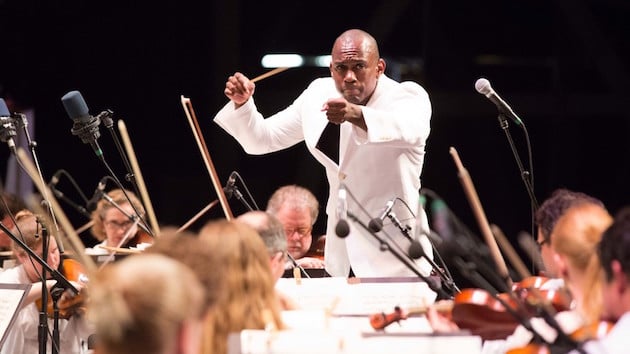
Choosing a music director is different than any other choice a symphony makes, and there are all sorts of ways organizations can avoid or postpone it. Some hire a conductor as a guest, or as a conductor in residence, or a conducting fellow, all roles which Young, still in his thirties, has performed in Phoenix, Buffalo, and Baltimore. He has been a guest conductor with the New World Symphony Orchestra and the Saint Louis Symphony, among numerous others. But as MTT enjoys his final season leading the San Francisco Symphony, no one needs to tell Bay Area audiences what an impact the right person at the helm can make by choosing repertoire that awakens interest, develops curiosity, and ultimately builds a devoted following.
For the conductor, a music directorship offers a sense of artistic continuity and scale. “I like the idea that when I leave after a week, I know how I left the orchestra and the orchestra has the expectation of what kind of sound and expectation in the work product I may have,” Young says. “I like the idea that you can build on something in the orchestra, so I’m looking forward to having my own orchestra so I can build like that, but also thinking about building on what artistic goals we may have. With guest conducting, it’s all about the moment, the week, but with a music director position I can have a long-term relationship with an orchestra.”
Berkeley Symphony Orchestra’s stated mission is “to champion symphonic music as a living art form,” and it did not take long for the musicians and the powers that be to feel Young’s affinity with that mission, nor to realize that they wished to put more into Young’s hands than the baton for one evening.
“The process kind of started within the concert week,” Young says. “I began to tell everyone, ‘I’m pretty interested,’ and they began to tell me, ‘I’m pretty interested.’ It was that kind of dating awkwardness. Then there were a lot of conversations between me and the executive director, mostly me asking more questions, so I came back to Berkeley a few times to meet with stakeholders to make sure it was a good fit. It happened fast. Speed dating to the max. It was very exciting to come to the conclusion that this is what was happening, but at the same time there was a lot to be done, because I basically had to program an entire season in about a month. I think the joy was always there, but I didn’t have time to really feel it until it was announced when I came back for the Gala in May, with the official announcement of the season. All the work that had been done from February to May was all out in public. I didn’t feel the prize until then.”
The son of a Navy man, Young’s family moved around a fair amount in his childhood before settling in Goose Creek, South Carolina, best known for its naval base, and an area where Young’s mother’s family resided.
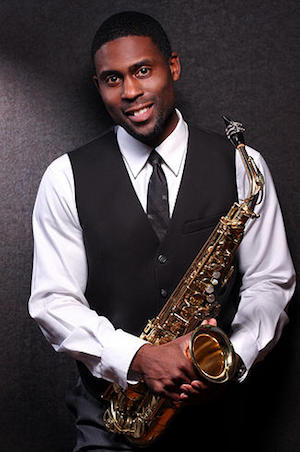
“We heard music mostly in church,” he says. “My mom comes from an extended family so I grew up going to the same high school she went to, the same church she grew up in, so we have a very tight-knit big family. In my immediate family, I’m the oldest of three, and I’m the first to actually pick up and train in an instrument, and my brother and sister followed.” Young’s brother, Robert Young, is an acclaimed saxophonist, now on the faculty at the University of North Carolina School of the Arts.
Young has known he wanted to conduct since he first heard an orchestra at the age of 16. “Sixteen was the first time I actually saw an orchestra, but it was also the first time I got to stand in front of an orchestra. It wasn’t any piece in particular, it was just the sound in front of me. I was a very introverted teenager and the idea of emoting what you wanted musically without saying a word was ... I want to say cathartic. I was finding a way toward finding my voice.”
An important mentor for Young has been Marin Alsop, whom he met at Cabrillo Festival of Contemporary Music in Santa Cruz. At the time, Young was hoping to continue his studies in graduate school. “I went up to her and said ‘I really want to go to grad school for conducting’ and she said ‘why don’t you come study with me.’ That moment changed my life. Before that I had no examples. I had no mentor. All I knew was that I wanted to conduct orchestras. In that moment I had all of that. Someone from whom I learned there is a transcendental power in what we do in music, which I began to appreciate. Someone who showed me, by example, to be a leader not only of an orchestra, but of a community, as when I was with her in Baltimore. Someone trusting my own talent, my own musicality, giving to me, and showing me that this is a process, and it takes time. As a young conductor I was very eager to ‘go, go, go!’ and she was there along the whole journey.
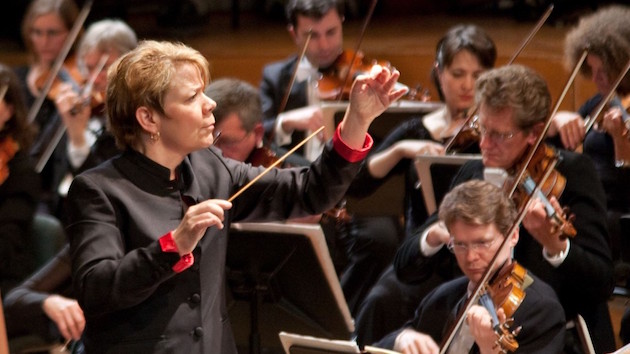
“I’m teaching with her now at Peabody [Conservatory in Baltimore], where we’re both teaching conducting. It’s kind of a strange to teach alongside someone who taught you, and at the school you went to! But seeing the students go through the same journey musically makes me realize how much more I appreciate being in that room with her throughout my early career. I went from teaching high school to working with a professional orchestra to teaching in graduate school. The learning curve was very steep.”
Young is director of ensembles at Peabody, and the variety of his current assignments seems to suit a diverse musical intellect. “I’m still trying to figure out what the common denominator is, but having all of that as part of my life keeps me humble and keeps me exploring musically. For each group, I need to find what inspires them, and that keeps me alive and focused. Right now in my career, it’s so important. I love that aspect of my life. It keeps me striving to discover new things and new music.”
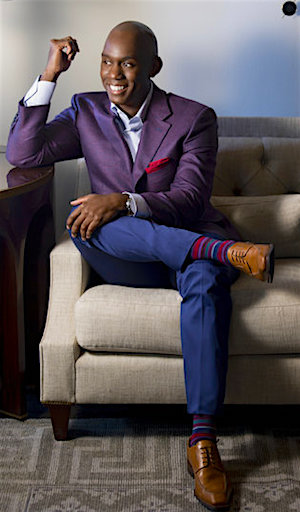
Asking Young about the upcoming repertoire for Berkeley is like asking a grandparent to describe in detail how cute their grandchildren are. He is effusive, delighted, and quite simply in love. Each concert contains components of innovation, and a recognition that he is serving a special kind of community.
“I wanted this season to be about focusing on the community, showcasing the community, investigating the community, not only Berkeley, but the Bay area.”
For the first of four symphonic concerts, which took place Oct. 24, Young wanted to feature a friend of the orchestra, so Conrad Tao returned to play Ravel’s Piano Concerto in G Major. The program also featured a work of Olly Wilson.
“There’s a group of African-American composers that I have always wanted to conduct, and one of them happened to be from Berkeley.” Wilson served on the faculty of UC Berkeley from 1970 to 2002, and remained a Berkeley resident until his death in March of 2018.
“I knew I wanted to feature an African-American composer somewhere in my season and I thought this was a great tribute not only to him, but to Berkeley, and also a way to strengthen the relationship between the Berkeley Symphony and UC Berkeley. Of course, I want to represent the masterworks, so we also have Beethoven’s Fifth.”
The season’s second symphonic concert on Feb. 6 is titled “You Have a Voice,” and will feature the San Francisco Girls Chorus in a work by Mary Kouyoumdjian called Become Who I Am.
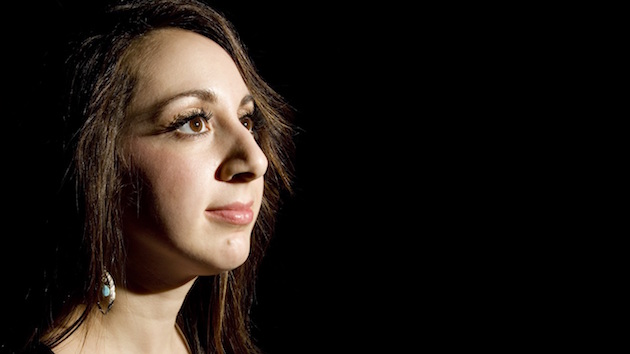
“Her piece talks about gender inequality, girls with confidence issues, and we have these young girls singing the parts, so I think it’s going to be a very empowering kind of message.”
Another woman composer, Xi Wang, will contribute a world premiere. “It’s important for us to have composers who write what they feel,” Young says, “whatever they want, so that’s exactly what we gave her, that mandate.” At first glance, Brahms may seem out of place on this program, but Young says, “Brahms struggled for many years to find his symphonic voice, so I think that fits.”
The third concert celebrates the talents of trumpeter Sean Jones. “I think everyone knows him as this great jazz artist, but not a lot of people know him on the other side,” Young says. “He’s also my colleague at Peabody, and with the National Youth Orchestra, where he works with the jazz portion. You in San Francisco had the opportunity to hear him doing [Stravinsky’s] The Soldier’s Tale, [for SF Performances] but he’s wanted to do other concertos, so I thought this was a great opportunity to show both sides of him.”
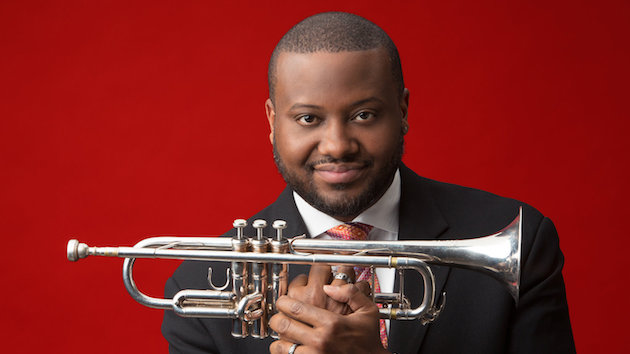
The program also includes a work by Gunther Schuller called Journey into Jazz. “If you think of Peter and the Wolf, narrated with a small orchestra, this is a story about a young trumpet player trying to find his jazz voice. It’s a great piece for young people, but those of us with a few more years will enjoy this piece as well,” Young says. “After intermission, Jones plays a Bay Area premiere of a Bernd Alois Zimmerman trumpet concerto based on the African American spiritual “Nobody Knows the Trouble I’ve Seen.” Bookending the concert we have Milhaud’s Creation of the World, which is basically his journey into jazz, on the idea of creation, and on the other end we have Gershwin’s An American in Paris which is his perspective on the life and sounds of Paris.” The concert will also feature players from Berkeley High’s acclaimed jazz ensemble.
The fourth symphonic concert features a U.S. premiere of Roxanna Panufnik’s Three Paths to Peace, a world premiere by Derrick Spiva, Jr., and Prokofiev’s Symphony No. 5.
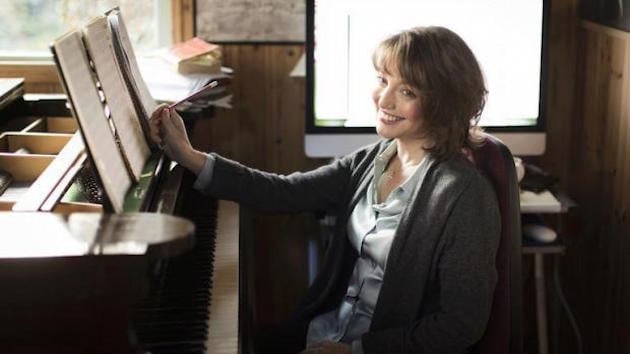
The second of the season’s five chamber music concerts takes place Nov. 3 at Piedmont Center for the Arts, and Young likens his symphonic job to the more intimate nature of chamber music. “For me, as a leader of a group, I know when I need to take charge and make that happen, but in terms of music making, I’m involved in the biggest chamber-music medium in classical music, and I love being a part of that.”
Young speaks with affection of his students, whom he says seem to have his manner decoded pretty well. “My students might say I have an intensity in my eyes that says one thing, but when I smile I say something else. They can tell when it’s time to get down to business and when, from they’ve told me, they can feel a little bit more relaxed.”
In our brief conversation Young is modest, engaging, interested, and thoughtful, seeming to embody another idea he expressed: “I think there is a way of leading and welcoming at the same time.”

